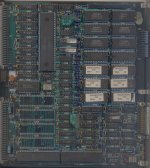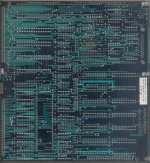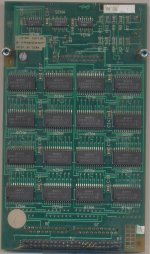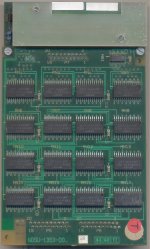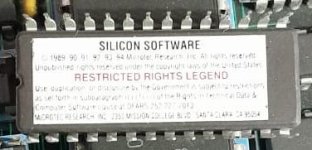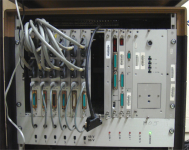X25 V1.9l 31/08/89
NuVRTX/68000 Rev. 3.20 Copyright 1986, Hunter & Ready, Inc.
BTSCB 01 (n_dis_id)
BTSCB 02 (n_dis_id)
BTSCB 03 (n_con_cf)
BTSCB 04 (n_con_cf)
BTSCB 05 (n_rdy_id)
BTSCB 06 (n_rdy_id)
BTSCB 07 (n_nrdy_id)
BTSCB 08 (n_nrdy_id)
BTSCB 09 (pt_appel)
BTSCB 10 (n_dta_id)
BTSCB 11 (n_dta_id)
BTSCB 12 (evt ???, INIT_TRANS)
BTSCB 13 (evt ???, REP_CV)
BTSCB 14 (evt ???, ATT_DTA)
BTSCB 15 (etat inconnu,bt_trans)
BTSCB 19 (etat inconnu,bt_trans_x25)
BASCB 01 (Arme TEMPO TEST)
BASCB 02 (Arme TSA)
BASCB 03 (Arme TPA)
BASCB 04 (Arme TAR)
BASCB 16 (Arme TRET)
BASCB 05 (env_exploit)
BASCB 06 (env_exploit)
BASCB 07 (env_vers_asso)
BASCB 08 (env_vers_asso)
BASCB 09 (hs_auto)
BASCB 10 (hs_auto)
BASCB 11 (auto_req)
BASCB 12 (auto_req)
BASCB 13 (ticket_chic)
BASCB 14 (ticket_choc)
BASCB 15 (Dem_occup)
BASCB 91 (SC_QPEND)
BASCB 92 (Message court !!!)
BASCB 93 (Evt ??? , INIT_APP)
BASCB 94 (Evt ??? , ATT_RES_TEST)
BASCB 95 (Evt ??? , ATT_MSG)
BASCB 96 (Evt ??? , RES_EMIS)
BASCB 97 (Evt ??? , ATT_FIN_COM)
BASCB 98 (Evt ???, ATT_FIN_ABORT)
BASCB 99 (Etat ???)
BSSCB 01 (n_con_rq)
BSSCB 02 (n_con_rq)
BSSCB 03 (emis_nok)
BSSCB 04 (emis_nok)
BSSCB 05 (emis_ok)
BSSCB 06 (emis_ok)
BSSCB 07 (n_dis_rq)
BSSCB 08 (n_dis_rq)
BSSCB 09 (ind_app)
BSSCB 10 (ind_app)
BSSCB 11 (asso_id)
BSSCB 12 (fin_com_rq)
BSSCB 13 (fin_com_rq)
BSSCB 14 (fin_com_req)
BSSCB 15 (abort_rq)
BSSCB 16 (abort_rq)
BSSCB 17 (fin_com_rs)
BSSCB 18 (fin_com_rs)
BSSCB 19 (sus_com)
BSSCB 20 (sus_com)
BSSCB 21 (res_test)
BSSCB 22 (res_test)
BSSCB 23 (n_dta_rq)
BSSCB 24 (n_dta_rq)
BSSCB 25 (n_dta_id)
BSSCB 26 (n_dta_id)
BSSCB 27 (dem_asso)
BSSCB 28 (dem_asso)
BSSCB 29 (dem_asso)
BSSCB 99 (bs_scb_asso)
BSSCB 98 (bs_scb_asso)
BSSCB 97 (evt ???, INIT_ASSO)
BSSCB 96 (evt ???, REP_CV)
BSSCB 95 (evt ???, REP_ASSO)
BSSCB 94 (evt ???, RES_ASSO)
BSSCB 93 (evt ???, ATT_REP)
BSSCB 92 (evt ???, ATT_MSG)
BSSCB 91 (evt ???,REP_FIN_COM)
BSSCB 90 (evt ???, REP_FIN_ABORT)
BSSCB 89 (evt ???,REP_CV_TEST)
BSSCB 88 (evt ???,REP_ASSO_TEST)
BSSCB 87 (etat inconnu !)
ALARME
PUB %2d incident(s) : %s- publiphone %s
PUB %2d incident publiphone - publiphone %s
PUB %2d fin d'incident(s) - publiphone %s
PUB %2d alarme(s) : %s- publiphone %s
FAX %2d incident(s) fax : %s- publifax %s
FAX %2d incident fax - publifax %s
TEX %2d incident(s) tex : %s- publivideotex %s
TEX %2d incident tex - publivideotex %s
PUB %2d changement d'etat - publiphone %s
PUB %2d mise au repos forcee de la ligne
PUB %2d article raccroche non recu
PUB %2d incompatibilite des articles SG 08 et 33
URP alarme(s) : %s
URP incident(s) : %s
SAM alarme(s) : %s- SAM %s
SAM incident(s): %s- SAM %s
SAM fin d'incident(s) : SAM %s
SGTD rupture de la liaison
SGTD temporisation inter blocs echue
SGTD bloc recu different du bloc attendu
SGTD authentification refusee 3 fois
SGTD message non reconnu
SGTD incoherence entre message et type de session
SGTD mauvais enchainement de messages
SGTD temporisation inter messages echue
SGTD abandon pendant %s
SGTD fin de transmission;
PUB %2d %s
PUB %2d resynchronisation de l'echange par %s
URP saturation imminente de la memoire
URP memoire pleine
REDALA 01
!!! SESSION CONNECTEE
!!! SESSION SECURISEE CONNECTEE
!!! DEBUT DE TRANSMISSION DES PARAMETRES CGP
!!! DEBUT DE TRANSMISSION DES PARAMETRES SGTD
!!! DEBUT DE SCRUTATION
!!! DEBUT DE TRANSMISSION DE LA LISTE %c
!!! DEBUT DE VIDAGE
!!! DEBUT DE VIDAGE TECHNIQUE
!!! SESSION DECONNECTEE
!!! SESSION SECURISEE DECONNECTEE
!!! FIN DE TRANSMISSION DES PARAMETRES CGP
!!! FIN DE TRANSMISSION DES PARAMETRES SGTD
!!! FIN DE SCRUTATION
!!! FIN DE TRANSMISSION DE LA LISTE %c
!!! FIN DE VIDAGE
!!! FIN DE VIDAGE TECHNIQUE
!!! REPRISE PARTIELLE DE L'URP (%1d C8V)
!!! REPRISE TOTALE DE L'URP (%1d C8V)
!!! CARTE COS NON RECONNUE : DIALOGUE SYSTEME DE GESTION IMPOSSIBLE
DIALOGUE SERVEUR BANCAIRE IMPOSSIBLE
DIALOGUE PRHM DEPORTE IMPOSSIBLE
!!! CARTE COS PRESENTE: SYSTEME DE GESTION SUR RTDP (J3)
SERVEUR BANCAIRE SUR RTDP (J3)
PRHM DEPORTE SUR RTCP - MODEM INTERNE (RCA)
!!! CARTE COS PRESENTE: SYSTEME DE GESTION SUR RTCP - MODEM INTERNE (RCA)
!!! CARTE C8V %d ABSENTE
!!! CARTE C8V %d HORS TRAFIC
!!! CARTE C8V %d PRESENTE
!!! DEBUT TEST CARTE C8V %d
!!! DEBUT TEST LIGNE PUBLIPHONE %2d
!!! DEBUT TEST PUBLIPHONE %2d
!!! MODULE DE SECURITE (SAM) INTESTABLE - ERREUR SUR 68692 CARTE COS
!!! MODULE DE SECURITE (SAM) INTESTABLE - ERREUR SUR LCM CARTE COS
!!! FIN TEST CARTE C8V %d
(anomalies:
%c %s
%c relais TD
%c relais CNX
!!! FIN TEST LIGNE PUBLIPHONE %2d
!!! FIN TEST PUBLIPHONE %2d
incident(s): %s
%c
!!! LIGNE PUBLIPHONE %2d DEJA AU REPOS
!!! MODULE DE SECURITE (SAM) ABSENT
!!! MODULE DE SECURITE (SAM) PRESENT ET EN SERVICE
!!! MODULE DE SECURITE (SAM) PRESENT ET HORS SERVICE
!!! MODULE DE SECURITE (SAM) PRESENT ET NON INITIALISE
!!! MISE EN SERVICE DU PUBLIPHONE %2d
!!! MISE HORS SERVICE DU PUBLIPHONE %2d PAR LE SG
!!! LIGNE PUBLIPHONE %2d MISE AU REPOS
!!! TEST CARTE C8V %d IMPOSSIBLE %s
!!! TEST LIGNE PUBLIPHONE %2d IMPOSSIBLE %s
!!! TEST PUBLIPHONE %2d IMPOSSIBLE %s
!!! TEST PUBLIPHONE %2d IMPOSSIBLE URP NON INITIALISEE
!!! URP HORS TRAFIC
FACTU SERVEUR %2d %2d
FS PUB %2d %2d
INEFF SERVEUR %2d %2d %2d %2d %2d
REDMES 01
 IMG_20231201_113648.jpg3.6 MB · Views: 52
IMG_20231201_113648.jpg3.6 MB · Views: 52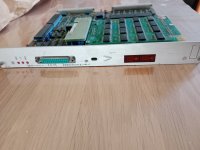 IMG_20231201_113501.jpg2.9 MB · Views: 50
IMG_20231201_113501.jpg2.9 MB · Views: 50 IMG_20231201_113512.jpg4.2 MB · Views: 49
IMG_20231201_113512.jpg4.2 MB · Views: 49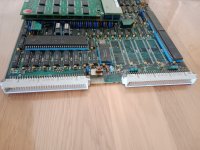 IMG_20231201_113522.jpg3.1 MB · Views: 41
IMG_20231201_113522.jpg3.1 MB · Views: 41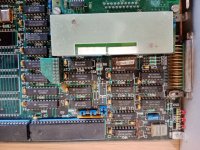 IMG_20231201_113532.jpg3.7 MB · Views: 52
IMG_20231201_113532.jpg3.7 MB · Views: 52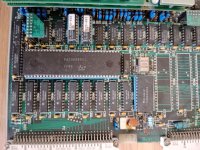 IMG_20231201_113543.jpg3.7 MB · Views: 53
IMG_20231201_113543.jpg3.7 MB · Views: 53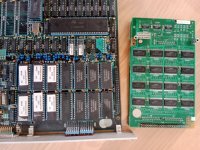 IMG_20231201_113633.jpg4.4 MB · Views: 51
IMG_20231201_113633.jpg4.4 MB · Views: 51
